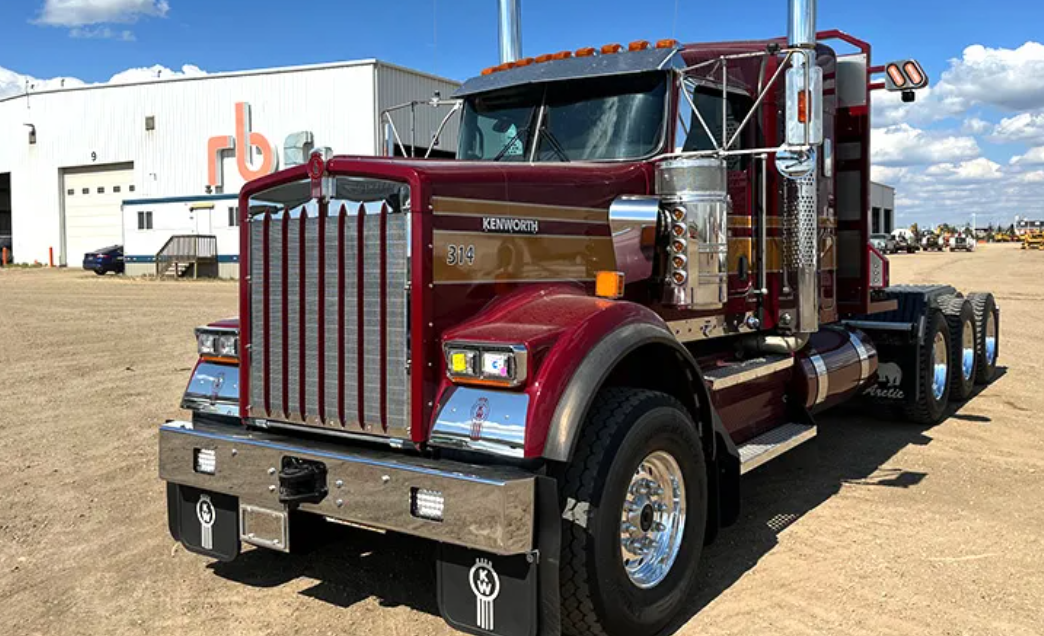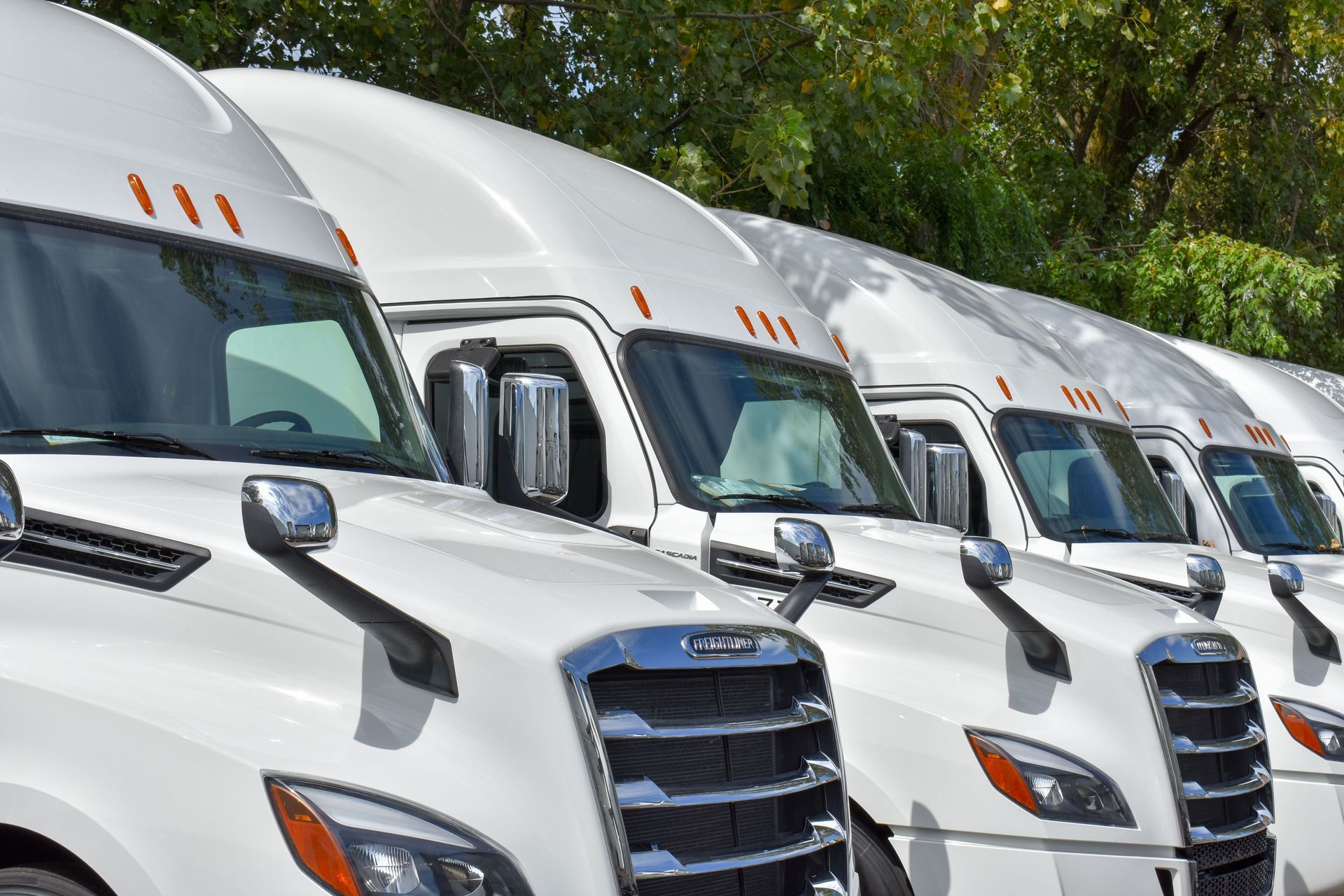WRITTEN BY: BLOOM SERVICES

So, you’re curious about OTR trucking? Buckle up (pun intended), because we are strapping in (second pun intended) to go through all the ins and outs of OTR trucking.
OTR stands for “Over-The-Road,” it’s basically a term used to describe long-haul trucking. As an OTR trucker, you will spend days to weeks on the road traveling throughout the US. OTR trucking is not your typical 9-to-5 job, it is a unique way of life with its very own vibrant community.
What is Over-the-Road (OTR) Trucking?
In a nutshell, OTR trucking involves transporting goods over long distances. Expect to go to all the continental United States (all 48), and some companies even travel across national borders (Canada and Mexico).
OTR is also known as long-haul trucking, where you will move freight from apples to Zambonis over long distances. Over two-thirds of all truckers are or have been involved in OTR trucking at some point in their career.
In OTR trucking, you can expect to easily drive over 3,000 miles a week on average with the average load being 1,200 to 1,500 miles. Most OTR trucking positions will have you on the road for three to four weeks at a time. Your semitruck, or rig, will be your home away from home. You will be in a truck with a cabin that is equipped with a bunk, fridge, and storage, not quite all the comforts of home, but enough to get the job done. While it is great to prove your teacher wrong by being successful staring out the window all day, OTR trucking requires grit and determination.
Types of Trucking Routes
Not all routes are long-haul, there are various types of trucking routes. Trucking is more than putting the pedal to the metal and driving from point A to point B. There are many types of trucking, each with its own type of truck. Let’s explore the different types of trucking routes.
OTR
As we mentioned earlier, OTR routes are long-haul routes where truckers will drive over 3,000 miles or more a week. You will be expected to travel across state lines and sometimes to Canada and Mexico with some companies. The routes will be long, and you will deliver about three to five loads a week.
OTR truckers should expect to travel over 150,000 miles a year and spend extended periods away from home. But wherever you go will be your home, OTR truckers have semitrucks with cabins, like smaller versions of an efficiency apartment or like a high-tech camper.
Regional

Regional truckers cover a few states around their home state. Usually, covering a 1000-mile radius area. When it comes to working hours, you will be expected to do 10-11 hours a day on average, and it can run into the weekend.
One notable benefit is that, for the most part, you’ll get to spend weekends at home. Additionally, regional truckers tend to earn a higher income compared to their local counterparts. Typically, regional truck drivers earn $1,330 per week–roughly 16% more than the average weekly income of all workers in the U.S.
Regional trucking has a significant downside: you won’t be at home every night, and your schedule will be tight. At times, you may need to drive through the night to meet deadlines.
Certain regional trucks come equipped with a cabin, but it’s worth noting that they might lack some of the additional features and amenities commonly found in over-the-road (OTR) trucks.
Local
Local truck driving generally operates within a two-hundred-mile radius. On rare occasions, you can be asked to do slightly longer runs. Most local truckers work 8 to 10 hours per day. You are expected to work Monday to Friday and on rare occasions, work over weekends.
The best thing about local trucking is that you go home every evening and most of the weekends. All the holidays you will spend with your family too. Local drivers often will run these routes in a day cab, basically a truck without a cabin or extra features.
Local trucking comes with its challenges. Drivers often find themselves navigating smaller roads and maneuvering into tight loading docks multiple times a day, requiring precision in reversing. Moreover, local runs may involve drivers actively assisting with the loading process. On the financial front, it’s important to note that local truck drivers in the United States earn an average annual income of $59,069 or $28.40 per hour.
Other types of Routes
There are also Specialized Routes. These are for truckers with unique skills and equipment. You could be hauling oversized loads, hazardous materials, or even driving refrigerated trucks to keep things chilly.
Lastly, there are Dedicated Routes. In this role, you become the designated trucker for a specific company or client. This involves having a set route and a regular schedule, offering a level of convenience for those who appreciate a structured routine.
Over-the-road vs Regional vs Local Trucking
Beyond the routes, there are other significant differences to consider when searching for a trucking position. Each type of trucking comes with its own set of advantages and disadvantages. It’s a bit like a “choose your own adventure” scenario. Let’s explore some of these differences.
OTR VS REGIONAL

Long-haul trucking typically requires traveling across state lines or even internationally. These trips can take several days or even weeks to complete and may involve crossing multiple time zones. Drivers of long-haul trucks are often away from home for extended periods of time and may spend nights sleeping in their trucks or at truck stops along the route.
Regional trucking, on the other hand, involves transporting goods within a specific region or area, such as within a single state or a few hundred miles from a central location. These trips are typically shorter in duration and drivers can return home regularly.
In general, long-haul trucking requires a greater level of endurance and stamina, as drivers may be on the road for long periods and may need to deal with the challenges of being away from home. Regional trucking may offer a more predictable schedule and may involve more local routes, which can be appealing to some drivers. The average hourly rate for regional truckers is about $35 an hour, or about $74,000 a year for drivers with two years of experience or so.
OTR vs Local
The pay for local truckers and long-haul truckers can vary based on several factors, including the specific job, the company they work for, their level of experience, and the region in which they work. In general, long-haul trucking may offer the opportunity to earn higher pay due to the longer distances and longer time spent on the road. However, local trucking can also be a well-paying profession, especially for drivers with specialized skills or experience.
According to the United States Bureau of Labor Statistics (BLS), the median annual wage for local and regional heavy and tractor-trailer truck drivers was $45,260 as of May 2020. However, the BLS notes that the lowest 10 percent of drivers earned less than $30,530 per year, while the highest 10 percent earned more than $72,200 per year. It is worth noting that trucking companies often pay drivers based on the number of miles they drive, rather than by the hour. This means that the more miles a driver can cover, the more they may be able to earn.
Local truckers are almost always home at night. They work only 8-10 hours a day and generally have set schedules. For local truckers, you will be in a day cab, or a truck without any bells and whistles.
Requirements for Over-The-Road Driving
In general, OTR trucking requires a Class A CDL. You will also be required to travel to at least all 48 states and to be out on the road for at least two weeks or more at a time. The average amount of time out on the road is four weeks at a time. Some companies hire newer drivers for OTR team runs, where you will be partnered with another trucker to deliver loads. Running teams might be great for learning but does require the ability to sleep in a moving truck. If you are a light sleeper, being on a team is not recommended.
To be successful as an OTR trucker, you will need to have grit. If you can manage a tight schedule and work 8 days a week, OTR trucking might be right for you. OTR truckers make more than regional and local drivers, so you are rewarded for being a strong driver.
Typical OTR Driver Salary Ranges
OTR truckers make more than local and regional drivers, but not all truckers and trucking companies are the same. The average salary for OTR truckers is $1,800 a week. But most OTR truckers are paid mileage. So, if you are not a strong trucker OTR trucking can be frustrating if you can only do 2,000 to 2,500 miles a week. With some companies, you may only make $800 a week.
The average yearly salary for OTR truckers is around $65,000 a year, with the top 10% making over $100,000 a year. At Bloom, our truckers average over $120,000 a year, with some making as much as $150,000 a year. But at Bloom, you will need to run an average of 3,000 plus miles a week.
Pros & Cons of OTR Trucking
The main advantage of being a long-haul trucker is money. You will be earning $100K+ per year, at least with Bloom. When it comes to job security OTR truckers will always be needed. There is also a sense of freedom with the open road. If you enjoy seeing the country with a sense of adventure, OTR Trucking is for you.
The equipment you will have will be a bit more comfortable and reliable, with a cabin complete with bunks, fridges, inverters, and other bells and whistles. Also, you will be able to install TVs, microwaves, and multicookers in your truck. You will never be without a place to sleep after a long day of work, so you will never have to commute to work.

Some cons or disadvantages to OTR trucking are the long hours and being out for weeks at a time. Some people are not cut out for being OTR truckers. It can put a strain on your relationships and health if you do not take care of yourself. You will also need to manage tight schedules and you’ll have to be organized to be successful. If you have grit and stamina, you just might be cut out to be an OTR trucker.
Where to Start Over the Road Truck Driving
To get started in OTR trucking it is important to have your Class A CDL. With your CDL you will need to find a good company to get experience with, but after you have a few years of experience you will make more money. After you have two years of experience, contact us for an OTR position. At Bloom, we pay 82% gross load. We offer newer equipment with all the bells and whistles. Our truckers make well over $100,000 a year and we have a program for you to lease-purchase a truck and expand your trucking business. To learn more, apply today.



office & Parking depot
5120 Belmont Rd Unit K, Downers Grove, IL 60515, USA
Hours of operation
Mon - Sun: 7am-5pm
